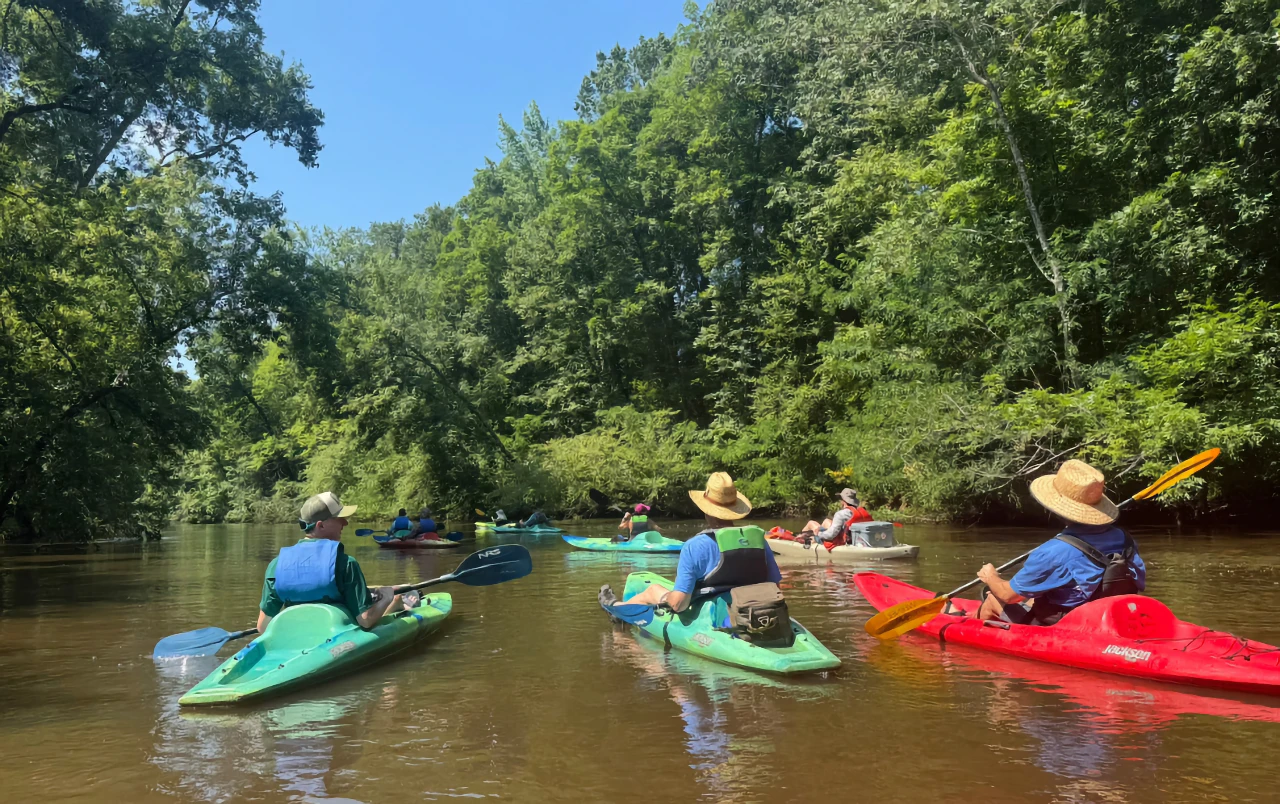News (808)
Children categories
ES! Initiatives (74)
EarthSolidarity!™ Initiatives are endeavors to which anyone can contribute in deed as well as in spirit, that
- minimize waste and environmental impacts
- increase community resilience
- respect and protect ecosystem processes and all forms of life
- contribute to good living conditions for everyone around the globe
- affirm and celebrate our interdependence and interrelatedness in the Web of Life!
Updated: Smokies searchers find body of missing Nashville man
Written by Hellbender Press
Search centered on Big Creek area near TN/NC line
HARTFORD — Park rangers and others searching for a 21-year-old man found his body in the Big Creek area of Great Smoky Mountains National Park. Ryan Lakes was last seen Sept. 18 in Nashville. His vehicle was found in the park on Sept. 20.
In an update on the search Monday afternoon, the park service released the following statement:
"Ryan Lakes was found deceased at approximately 2:45 p.m. on Sept. 21 in the Big Creek area of Great Smoky Mountains National Park.
“Lakes, age 21, was last seen Thursday, Sept. 18 in Nashville, TN and his vehicle was found in the Big Creek area of the park on Sept. 20. Park rangers and local agencies completed an initial search on Sept. 20 and continued search efforts on Sept. 21.“
 Elk are native to the Southern Appalachians, but overhunting and poor management led to its extirpation by the turn of the 20th century. Elk can now be seen throughout the park, and the park service warns visitors the animals can be dangerous during the autumn rut. Bill Pattison/National Park Service
Elk are native to the Southern Appalachians, but overhunting and poor management led to its extirpation by the turn of the 20th century. Elk can now be seen throughout the park, and the park service warns visitors the animals can be dangerous during the autumn rut. Bill Pattison/National Park Service
Elk flourish -- and put on a show -- in Great Smoky Mountains National park 25 years after reintroduction
Kenzie Connor is a National Park Service communications officer.
GATLINBURG —The annual elk breeding season, known as the rut, is underway in Great Smoky Mountains National Park. The rut can be exciting to witness, but it can also be dangerous, as elk are especially unpredictable during this time.
Park visitors should exercise extra caution and respect all wildlife regulations as they visit the park this season.
During the rut, male elk (bulls), experience heightened testosterone levels and are more likely to exhibit defensive behavior as they compete for dominance. Bulls will charge or challenge anything they perceive as a threat, including people and vehicles. Female elk (cows), remain protective of their calves, adding to the overall stress amongst elk herds.
In Virginia, Master Naturalists celebrate 20 years of stewardship and community
Written by By Chris Moody Volunteers in the Holston Rivers Chapter of the Virginia Master Naturalists learned about freshwater mussels and other aquatic organisms at an event where they were in the water, examining the natural habitats. Monica Hoel
Volunteers in the Holston Rivers Chapter of the Virginia Master Naturalists learned about freshwater mussels and other aquatic organisms at an event where they were in the water, examining the natural habitats. Monica Hoel
Become a master of your domain; courses available in ET and WNC
BLACKSBURG — Two decades after its start, the Virginia Master Naturalist program continues to empower volunteers to protect and enhance the state’s natural resources.
Launched in 2005 as part of a growing national movement, the Virginia Master Naturalist program trains residents in ecology, wildlife, and environmental stewardship. Operated by Virginia Cooperative Extension and housed in the College of Natural Resources and Environment at Virginia Tech, the program has grown to 30 chapters across the commonwealth.
“The program emerged from a national push to establish Master Naturalist initiatives in every state,” said Michelle Prysby, the program's director and senior Extension specialist. “A framework was created in 2004 by five state agencies, and Virginia Tech was selected to lead the program.”
In East Tennessee, at least two Master Naturalist training programs are available; there are also several naturalist programs in Western North Carolina.
- southeastern master naturalist programs
- what can i learn as a master naturalist
- knoxville master naturalist classes
- virginia tech college of natural resources and environment
- western north carolina master naturalist classes
- holston rivers chapter of the virginia master naturalists
- how can i learn about nature
Conservation allies save Hatchie River watershed from auction block
Written by Jon D. Bumpus The Hatchie River in McCrairy County, Tennessee is known for both its ecological value and its recreational value. TennGreen Land Conservancy
The Hatchie River in McCrairy County, Tennessee is known for both its ecological value and its recreational value. TennGreen Land Conservancy
TennGreen secures protection for last unchanneled tributary of Mississippi River
Jon. D. Bumpus is TennGreen Land Conservancy communications director.
SELMER — TennGreen Land Conservancy, The Nature Conservancy in Tennessee, and The Conservation Fund joined forces to protect 1,273 acres of ecologically rich bottomland hardwood forest and wetlands along the Hatchie and Tuscumbia rivers in McNairy and Hardeman counties. The conservation of this land is a milestone achievement in one of Tennessee’s most treasured and threatened river systems.
Late in the fall of 2024, the Hatchie River Conservancy alerted TennGreen that the property was headed to auction in just two weeks. Time was of the essence. The tract, slated for sale in six parcels, each in separate auctions, was at risk of becoming permanently fragmented. TennGreen and partners negotiated a delay, secured an appraisal, made a direct offer, and successfully canceled the auction.
In 2025, the property was officially acquired, funded in part by the Heritage Conservation Trust Fund, and is now under the jurisdiction of the Tennessee Wildlife Resources Agency (TWRA). This landscape will become a publicly accessible Wildlife Management Area, providing not only critical habitat but also new opportunities for outdoor recreation in West Tennessee.
Flowing freely through the hills and bottomlands of six Tennessee counties, the Hatchie River is the last unchanneled, free-flowing tributary of the lower Mississippi River. Its 238 miles wind through dense forests, canebrakes and swamps, supporting astonishing biodiversity.
- hatchie river
- west tennessee land preservation
- tennesse wildlife resources agency
- tenngreen
- tenngreen land conservancy
- eastern slender glass lizard
- buford pusser
- tuscumbia river
- johnd d bumpus
- threatened river system
- the conservation fund
- hatchie river conservancy
- bottomland hardwood
- heritage conservation trust fund
- wildlife management area
- critical habitat
- outdoor recreation
- biodiversity
- class i natural river area
- scenic river classification
- floodplain ecosystem
- ophisaurus attenuatus longicaudus
- endangered species
- big hill pond state park
- tennessee state wildlife action plan
- southeast conservation blueprint
- memphis sand aquifer
Ijams hails bats — lots of bats — with new habitat house
Written by JJ Stambaugh University of Tennessee professor emeritus Gary McCracken is seen this summer near the new massive bat house built at Ijams Nature Center in Knoxville. McCracken, who will help with research at the site, spent his life studying bats; he attributes their northward migration to climate change and warns of critical pest-control gaps if bats continue their decline. J.J. Stambaugh/Hellbender Press
University of Tennessee professor emeritus Gary McCracken is seen this summer near the new massive bat house built at Ijams Nature Center in Knoxville. McCracken, who will help with research at the site, spent his life studying bats; he attributes their northward migration to climate change and warns of critical pest-control gaps if bats continue their decline. J.J. Stambaugh/Hellbender Press
New exhibit will host research into critical pest-control species; could attract 200,000 bats to urban wildlife refuge
Bat, bat,
Come under my hat,
And I'll give you a slice
of bacon;
And when I bake
I'll give you a cake,
If I am not mistaken.
— Traditional nursery rhyme
KNOXVILLE — Of all the critters that share this Earth with Homo sapiens, bats might have the most schizophrenic reputation of all.
Depending on who you ask, bats — of which there are at least a dozen species in East Tennessee alone — are seen as creepy, adorable, weird, useful or diseased. Opinions may vary, but the one thing that most folks might agree upon is that bats are, well, fascinating.
And that’s a good thing for local nature lovers, because up to 200,000 of them should soon be living at South Knoxville’s own nonprofit wildlife sanctuary, Ijams Nature Center.
Under the direction of University of Tennessee professor emeritus Gary McCracken and Ijam’s conservation director, Ben Nanny, a bat house has been constructed near Meads Quarry that’s expected to attract a large colony of Mexican free-tailed bats that will prove to be a delight for Ijams visitors.
- bat house
- ijams nature center
- mccracken bat research
- knoxville bats
- where can i see bats
- are bats good or bad
- gary mccracken
- ijams bat house
- mexican freetailed bat
- tadarida brasiliensis
- bat tower at meads quarry
- bats and climate change
- bats are not blind
- bats good for agriculture
- economic value of bats
- pest control with bats
This weekend: Enjoy music, nature and protest at Reclaim the Ridge
Written by Hellbender Press
Allies come together to fight Enbridge’s Ridgeline gas pipeline through Obed watersheds
LANCING — Reclaim the Ridge is a weekend of music, nature, fun and action to raise awareness and funds in opposition to Enbridge’s proposed Ridgeline gas pipeline — set to slice across 122 miles of Tennessee and make 162 waterway cuts through tributaries of the Obed Wild and Scenic River system.
Project opponents and the like-minded plan to gather for Reclaim the Ridge Sept. 5-6 at the Lilly Pad Hopyard Brewery for an unforgettable time featuring live music by The Local Honeys, camping, hiking, swimming and giant puppets from the Cattywampus Puppet Council!
Swap seeds and stories and sample local pawpaws at first Pawpaw Festival
KNOXVILLE — Multiple wildcrafters, seed collectors and general treehuggers — and wild critters — here and throughout the Southern Appalachians are really getting into wild pawpaw trees and their fruit.
Asimina triloba, the American papaw, is native to hardwood forest understories of the eastern United States, including the rich oak, hickory and maple forests of the Appalachians. It can be cultivated on private land or urban food plots, and of course grows richly in area forests. Its fruit is widely described as custard-like in texture.
There is a growing critical mass of pawpaw fans to meet occasionally and swap seed and its Knoxville’s turn to recognize the humble yet mighty local fruit. The first of what is planned to be an annual event is set 6 p.m. Aug. 31 at the Trailhead Beer Market, 1317 Island Home Ave.
Feds award expedited work on Newfound Gap Road after latest regional weather disaster
Written by Katie Liming
US 441 from Sugarlands to Newfound Gap expected to reopen by end of September after heavy rains wash out roadway
Katie Liming is a public information officer with the National Park Service.
GATLINBURG — The National Park Service and the Federal Highway Administration continue to work quickly to repair the road washout on US 441/Newfound Gap Road. The FHWA has awarded the contract to Eclipse Companies, LLC, and the NPS and FHWA held a pre-construction meeting with the contractor on Friday. The contractor was expected to begin mobilizing equipment and supplies this week.
Construction is expected to be completed on or before September 30.
The park responded Aug. 1 to reports of a road washout and landslide event on Newfound Gap Road between mile marker 12 and 13 on the Tennessee side of the park (south of Alum Cave trailhead).
The affected area spans about 125 feet and has significantly undercut nearly the entire width of the southbound lane. On August 2, NPS and FWHA engineers visited the slide and immediately began project scoping. Both agencies worked quickly to complete the required steps of the design, permitting and contracting processes for construction.
- us 441/newfound gap road
- smokies heavy rain
- us 441 closed
- can i drive through smokies
- sugarlands
- great smoky mountains national park
- great smoky mountains national park climate change
- smokies storm damage
- smokies travel conditions
- smokies news
- shuttle services in great smoky mountains national park
- smokies shuttle
Helene: Colquitt Foundation gives $750,000 for ongoing recovery in Smokies
Written by Jim Matheny Damage to Cataloochee Road with the Caldwell Barn in the background in Great Smoky Mountains National Park. Repairs following Tropical Storm Helene continue and will be supported by a grant from the Colquitt Foundation. Friends of the Smokies
Damage to Cataloochee Road with the Caldwell Barn in the background in Great Smoky Mountains National Park. Repairs following Tropical Storm Helene continue and will be supported by a grant from the Colquitt Foundation. Friends of the Smokies
$750K donation to Friends of the Smokies part of a larger $2 million commitment to assist Hurricane Helene recovery
Jim Matheny is Friends of the Smokies communications director.
KODAK — Reflecting a longtime devotion to Great Smoky Mountains National Park, The Colquitt Foundation has given $750,000 to the nonprofit Friends of the Smokies to save historic structures and help the national park’s Cataloochee Valley recover from damage caused by Hurricane Helene.
“Hurricane Helene left its mark on Cataloochee Valley. Cataloochee Ranch was founded in that valley, and we feel a responsibility to help. We are honored to partner with Friends of the Smokies to contribute towards its revival and restoration,” David Colquitt said.
The Colquitt Foundation made the gift on behalf of The Swag as well as Cataloochee Ranch, two historic mountain retreats operated by the Colquitts on the boundary of Great Smoky Mountains National Park in Haywood County, North Carolina.
“Cataloochee Valley is a jewel for our entire region. Its cultural, historical, environmental and recreational value is something that cannot be replaced. On behalf of our 150+ Haywood County team members, we are honored to make this contribution,” Annie Colquitt said.
The $750,000 gift to Friends of the Smokies will fund restoration of historic structures damaged by Hurricane Helene in September 2024, including cabins and barns from Cataloochee to Cosby. Through the Forever Places program, these critically needed funds will provide materials, supplies and support for a skilled staff of historic preservation experts to make the needed repairs.
- hurricane helene
- hurricane helene cataloochee
- hurricane helene smokies
- hurricane economic loss
- hurricane helene western north carolina
- colquitt foundation
- the swag
- david colquitt
- caldwell barn cataloochee
- helene repairs in smokies
- dana soehn
- friends of great smoky mountains national park
- friends of the smokies
- beech grove school
- cataloochee ranch
Incredible Farm Dinner Downtown
Last year’s Annual Incredible Farm Dinner Downtown had to be cancelled because of Hurricane Helene.
The already legendary Greeneville tradition celebrates local farms and community. It’s hosted by the Rural Resources Farm & Food Education Center. Many local sponsors, businesses, farms, churches and the Town of Greeneville make this event possible. Get your tickets early! The dinner sells out every year, a testament to its success and the value of the Rural Resources programming it supports.
Maryville honors East Tennessee conservation giant with fields and forests
Written by Allison Lester A public park planned along U.S. 321 in Maryville will honor East Tennessee conservation legend Billy Minser. Linda Albert via social media
A public park planned along U.S. 321 in Maryville will honor East Tennessee conservation legend Billy Minser. Linda Albert via social media
The park will host hiking trails and natural areas for the public to enjoy
MARYVILLE — The city and Foothills Land Conservancy (FLC) have partnered on the creation of Billy Minser Park, a new 23-acre public green space set to open in 2025 off U.S. 321 in Blount County.
The property for the park was donated by the late Catherine Gilreath to FLC and the City of Maryville with the shared goal of creating a space for public enjoyment and environmental education. The park is under a conservation easement — meaning it will be protected from development forever.
When complete, Billy Minser Park will feature hiking and walking trails along a scenic creek corridor through forests and open fields. It will serve as a place for the community to connect with nature while preserving local habitat.
The park honors William “Billy” Minser — a beloved conservationist, educator and long-time FLC board member whose career has spanned decades in forestry, wildlife management and land preservation.
Land donation protects Obed-area wildlands on eastern fringes of Cumberland Plateau
Written by Ben Pounds Hikers walk along Ramsey Creek during a dry time. Tennessee Citizens for Wilderness Planning has assembled land to be turned over to the National Park Service to expand public lands at the Obed Wild and Scenic River. Chuck Estes/Tennessee Citizens for Wilderness Planning
Hikers walk along Ramsey Creek during a dry time. Tennessee Citizens for Wilderness Planning has assembled land to be turned over to the National Park Service to expand public lands at the Obed Wild and Scenic River. Chuck Estes/Tennessee Citizens for Wilderness Planning
There’s more room to roam in the Cumberlands thanks to Oak Ridge-based citizens group
WARTBURG — As East Tennesseans and tourists alike enjoy summer fun on the wild Obed River, enthusiasts are growing its amount of federally protected land.
Part of the U.S. National Park Service system, the Obed Wild and Scenic River in Cumberland and Morgan Counties on Tennessee’s Cumberland Plateau offers swimming, hiking, picnicking, kayaking, fishing and climbing at the federally protected park. It currently includes about 45 miles along streams like the Obed and Emory Rivers.
Residents of Oak Ridge, a little less than an hour’s drive away, created Tennessee Citizens for Wilderness Planning (TCWP) and lobbied to create the federally protected area in 1976. Now, the same group, through fundraising and land swaps with anonymous private individuals, has gained 30 acres on which it plans to build a trail connected to the federal land.
- obed national wild and scenic river
- tennessee citizens for wilderness planning
- tennessee land preservation
- cumberland mountain quail
- cumberland plateau
- cumberland hiking
- new hiking trails in east tennessee
- hiking in tennessee
- recreation
- fishing
- kayaking
- climbing
- ramsey creek
- national park service
- hellbender
- citizen action
Network alert: Tennessee Sustainability Conference set for Gatlinburg
Written by Cindy Dupree Holloway The towering Space Needle in Gatlinburg offers views of Great Smoky Mountains National Park. The city is host to the Tennessee Sustainability Conference set to begin Aug. 20. Gatlinburg Chamber of Commerce
The towering Space Needle in Gatlinburg offers views of Great Smoky Mountains National Park. The city is host to the Tennessee Sustainability Conference set to begin Aug. 20. Gatlinburg Chamber of Commerce
Conservation education event is hosted in part by Tennessee Chamber to address sustainability challenges
GATLINBURG — The annual Tennessee Sustainability Conference is scheduled to take place Aug. 20-22 at the Park Vista Hotel. The conference is a partnership among Tennessee Recycling Coalition, Tennessee Chamber of Commerce and Industry, and Tennessee Environmental Conference. It brings together environmental professionals from across the region.
Nearby Great Smoky Mountains National Park is an internationally known treasure trove of biodiversity and accompanying sustainability research.
“The three-day event will provide attendees an accelerated learning opportunity featuring the latest trends and best practices in environmental sustainability,” said Tennessee Recycling Coalition Executive Director Amber Greene. “Staying on the cutting-edge of our ever-growing industry is essential to improving the lives of all Tennesseans. I encourage environmental leaders across the state to join us.”
According to organizers, the event will bring environmental professionals, decision-makers, government officials, business and industry leaders, attorneys, consultants, engineers, developers, architects, agribusiness leaders, energy experts, water planning districts, universities, public health officials, and solid waste and recycling experts, from across the region to learn about the latest trends and best practices in environmental sustainability.
- tennessee sustainability conference
- gatlinburg events
- sustainability education
- sustainability research
- sustainable agriculture
- sustainability
- tennessee recycling coalition
- amber greene
- park vista hotel
- learn about sustainability
- brownfield program
- brownfield remediation
- tire disposal
- green events knoxville
- solid waste
- mayors retreat gatlinburg
- great smoky mountains national park
- science research
Water advisory: Tread carefully when choosing home water filtration systems
Written by Robert Norris Little River, seen here at Elkmont in the Great Smokies, is the main source of drinking, agricultural and commercial water for rapidly growing Blount County. It is a pristine river for much of its stretch, but even this water source needs filtration before consumption. Be careful when selecting a filtration system for your home. Thomas Fraser/Hellbender Press
Little River, seen here at Elkmont in the Great Smokies, is the main source of drinking, agricultural and commercial water for rapidly growing Blount County. It is a pristine river for much of its stretch, but even this water source needs filtration before consumption. Be careful when selecting a filtration system for your home. Thomas Fraser/Hellbender Press
Looking for a home water-filtration system? Don’t get reamed by unscrupulous companies; and yes, even sexist behavior
LOUISVILLE — Earlier this summer, a small part of Louisville was placed under a boil notice by South Blount County Utility District after a water test came back positive for coliform and E-Coli. Both are microorganisms that cause disease in humans, and can lead to deadly consequences if ingested long-term.
Recently, it seems like more and more water contaminants have been found throughout East Tennessee and parts of Northwest Georgia. Georgia, for instance, has water issues so severe than Erin Brockovich (environmentalist legend) has advocated for home owners in the area.
Brockovich is in a legal battle against several manufacturers because they concealed information regarding PFAS (per- and polyfluoroalkyl substances) contaminating local water supplies. PFAS pose serious health concerns for those drinking water that contains them. As a result of such revelations, health care providers in affected areas advise Americans to have their home’s water quality tested, while vendors of home filtration systems and gadgets urge them to pursue water treatment and filtration.
Editor’s note: The U.S. Safe Drinking Water Act of 1974 requires all public water systems to regularly test their water quality, to alert the public if unsafe concentrations of contaminants are detected, and to annually publish a Consumer Confidence Report (CCR). The CCR must list test results in detail to help people make informed choices about the water they drink. If you are a customer of a water utility, consult your CCR every year. If you live in a home that is no older than 50 years, have no doubts that its plumbing was installed by qualified professionals, have no inhabitant with health-related chemical sensitivities and never notice any odd flavor in your drinking water, you may find private water testing unwarranted.
I did marketing for a water filter supplier and would like to supply Tennesseans and others with some do’s and don’ts when navigating the water-treatment world. Please note, these are my opinions and are simply here to help you in your quest for clean water.
Have your water tested
It is vital to have your water tested for contaminants. Lead, chlorine, PFA levels and hardness are all issues you have to monitor. I implore you to test your home’s water every 3-4 years to be aware of any changes that may occur. If you are looking to buy a new home, have your water tested as part of your home inspection.
Lots of water-filtration suppliers offer free testing. Some you can trust; others you can’t. The majority of suppliers want to hear from you, and they want to sell you a filter. Some may even resort to scare tactics to seal the deal. If you can, start your testing through your utility district or a home inspector specifically trained in water filtration.
 Mitchie Takeuchi answering questions from the audience at Central Cinema on August 7. Wolf Naegeli/Hellbender Press
Mitchie Takeuchi answering questions from the audience at Central Cinema on August 7. Wolf Naegeli/Hellbender Press
Screening of the feature-length documentary with Mitchie Takeuchi at Knoxville’s Central Cinema
Knoxville — As part of its Bearing Witness program to commemorate the 80th anniversary of the Hiroshima and Nagasaki atom bombings, the Oak Ridge Environmental Peace Alliance (OREPA) organized a viewing of The Vow from Hiroshima and conversation with its co-producer/writer Mitchie Takeuchi. Takeuchi is a second generation ‘hibakusha,’ the Japanese word for atom bomb survivors. Her father, Dr. Ken Takeuchi, was a military surgeon and founding president of Hiroshima’s Red Cross Hospital from 1937 to 1947. He was at the hospital and badly wounded, but survived.
The film follows the story of Setsuko Thurlow, who was 13 when she barely managed to crawl out from the rubble of her school before it was overwhelmed by the fire that burned most of her schoolmates alive. Setsuko became the foremost international proponent for the abolition of nuclear weapons. She was part of the International Campaign to Abolish Nuclear Weapons’ delegation that received the 2017 Nobel Peace Price in Oslo. In her acceptance speech, she said:

A 52-minute short version of The Vow from Hiroshima can be watched on PBS.
More...
Bearing witness: Walk for disarmament and lantern ceremony

80th Anniversary events organized by the Oak Ridge Environmental Peace Alliance
Rally and walk action for disarmament
Saturday, August 9 | 10:00 a.m.
Gather at Bissell Park in Oak Ridge.
Join the walk to the gates of Y-12 for a rally with music, street theater and calls for nuclear disarmament.
Lantern Ceremony along the Tennessee River
Saturday, August 9 | 8:00 p.m.
Sequoyah Hills Park in Knoxville
Close the week with a reflective lantern ceremony along the water — honoring the lives lost and our continued commitment to peace.
Visit the OREPA website for details and more events.
Bearing witness to Hiroshima

80th Anniversary events organized by the Oak Ridge Environmental Peace Alliance
Moving personal accounts of time spent in Hiroshima
Friday, August 8 | 6:00–8:00 PM
First Presbyterian Church Knoxville
First, readings from hibakusha Hideko Tamura Snider’s book “One Sunny Day: Childhood Memories of Hiroshima.” Then, Utsumi Gyoshu, Rachel Stewart and author Emily Strasser will each give remarks about recent experiences in Hiroshima. Q&A will follow.
Visit the OREPA website for details and more events.
Bearing witness: The Vow from Hiroshima

80th Anniversary events organized by the Oak Ridge Environmental Peace Alliance
Film Screening: The Vow from Hiroshima
Thursday, August 7 | 6:00–8:00 PM
Central Cinema (TBC)
Join us for a powerful documentary followed by a conversation with co-producer/writer, Mitchie and discussion led by Ed Sullivan.
Visit the OREPA website for details and more events.
Editorial: As summer sizzles and pops, EPA makes a bad energy move
Written by Stephen Smith The Environmental Protection Agency headquarters in Washington, D.C. in the William J. Clinton Federal Building. The EPA is considering changes to pollution regulations intended to at least forestall some risks of global climate change. EPA
The Environmental Protection Agency headquarters in Washington, D.C. in the William J. Clinton Federal Building. The EPA is considering changes to pollution regulations intended to at least forestall some risks of global climate change. EPA
With a backdrop of record heat and floods, EPA moves to deregulate greenhouse gases that are heating the planet
Stephen Smith is the executive director of the Southern Alliance for Clean Energy.
KNOXVILLE — July was brutal: As the Southeast sizzled under a stagnant heat dome, families still struggled to recover from hurricanes Helene and Milton, and communities reeled from catastrophic flash flooding in Texas. Yet in the face of this mounting climate crisis, the government has launched an unprecedented assault on the environmental protections that keep Americans safe.
This week, the new Environmental Protection Agency (EPA) under the Trump Administration moved to repeal the 16-year-old scientific finding that greenhouse gas pollution and emissions from power plants, the oil, gas and coal industries, and vehicle emissions endanger public health and welfare. Without this endangerment finding, the EPA will be forced to abandon its responsibility to set limits on the pollution that’s driving more frequent and severe heat waves, floods and storms.
The EPA has one job: to protect the people and places we love — our families, our communities, our children’s future. It defies logic and common sense to remove the foundational pillars of our pollution rules precisely when climate impacts are accelerating and we need protections and proactive solutions the most. Simultaneously, the Administration is also recklessly slashing funding and staffing at NOAA, the agency responsible for helping us prepare for disasters, and FEMA, the agency responsible for helping us recover from disasters.
The administration is gaslighting Americans by telling us that climate disruption isn’t a threat when we can see with our own eyes the parade of horribles of repeating record-breaking climate disasters. 2024 was the hottest year on record by a wide margin, flash flood warnings in 2025 have already exceeded previous records and American families — from Texas flood victims to Southeast hurricane survivors — are paying the price with their lives, homes and livelihoods.


